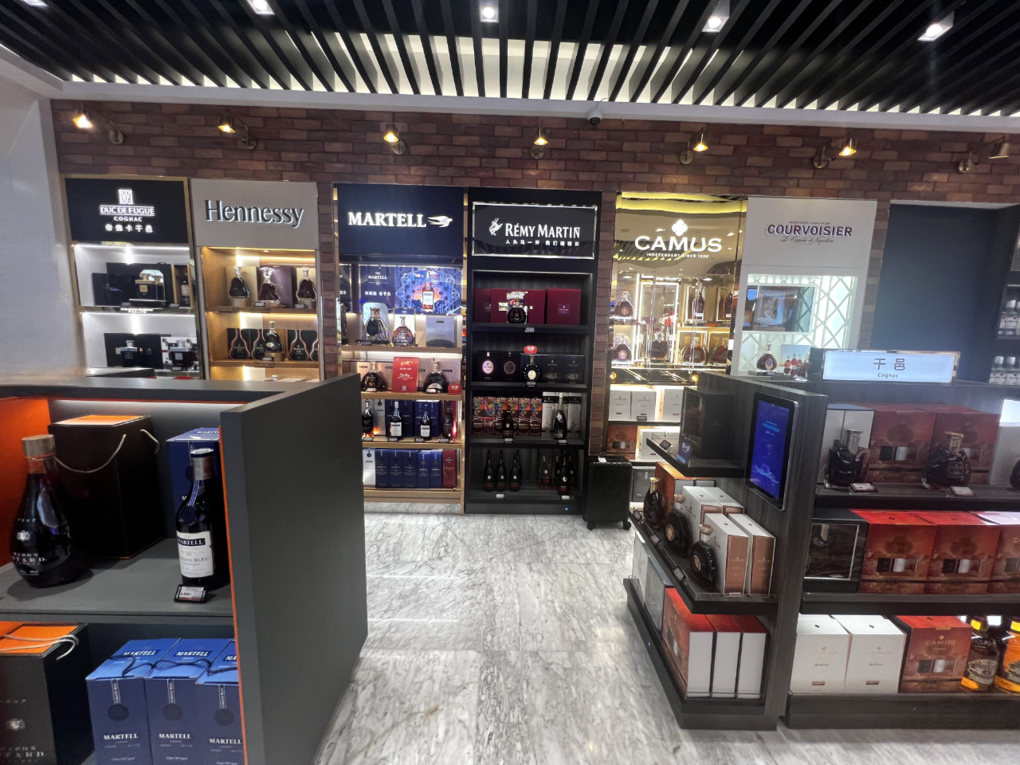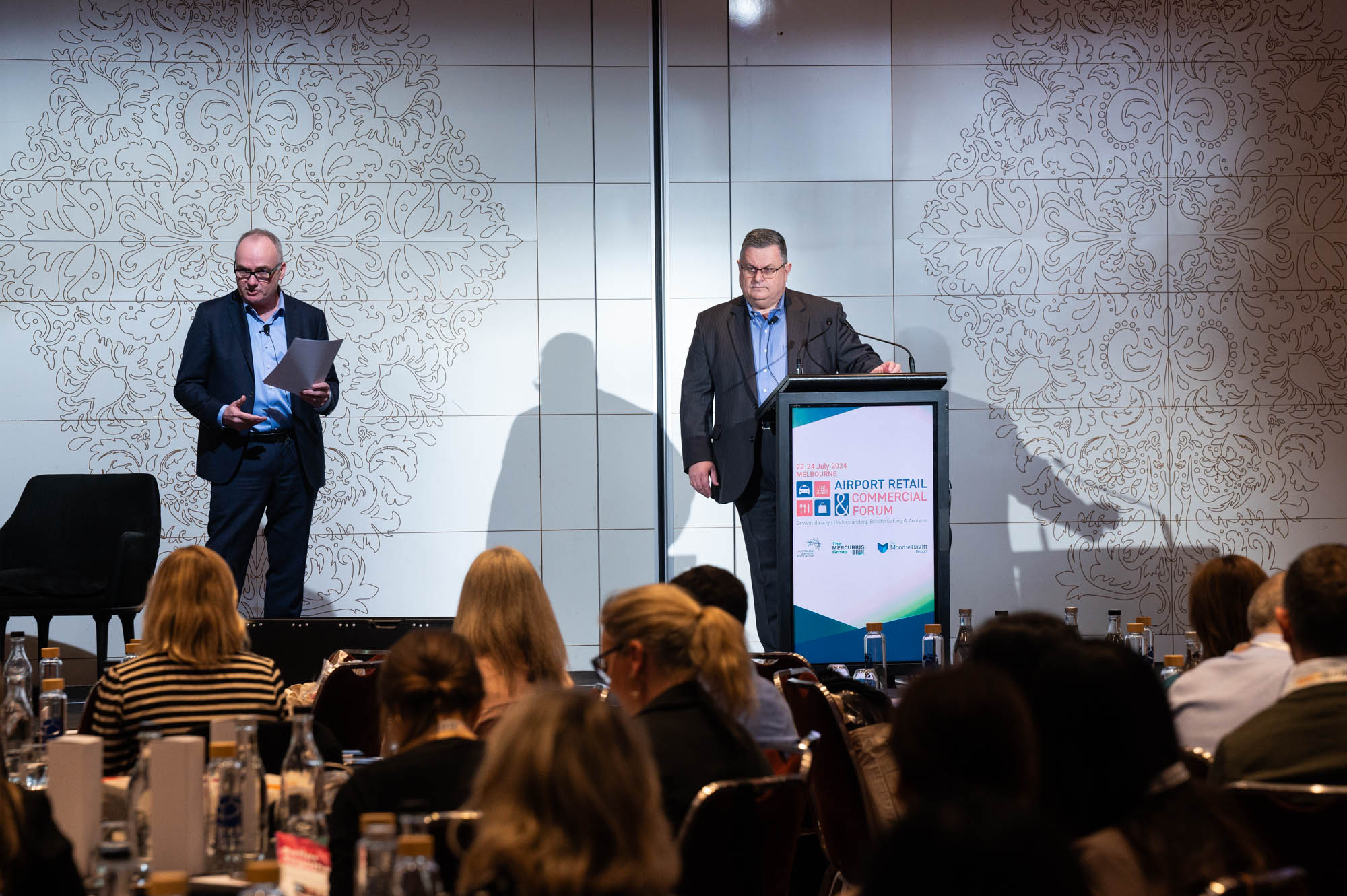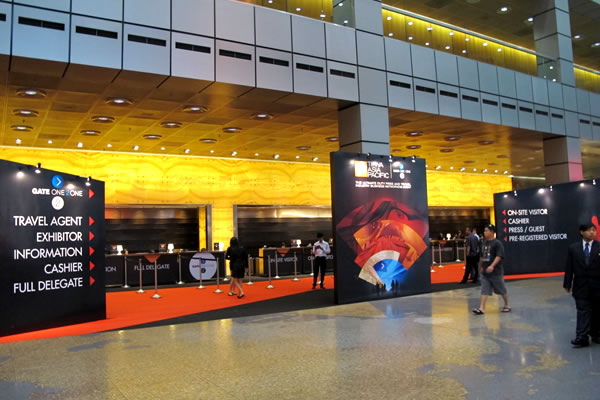 |
The TFWA Asia Pacific & GATE ONE2ONE opened on Monday morning at the Suntec Singapore |
SINGAPORE. The TFWA Asia Pacific & GATE ONE2ONE Conference took place on Monday at the Suntec Singapore with a focus on the duty free and travel retail industry in Asia Pacific.
Moderated by TFWA Conference & Research Manager Michael Barrett, the opening plenary session kicked off with TFWA President Erik Juul-Mortensen reflecting on the huge potential of the business in Asia Pacific today.
In a strong, data-rich presentation, Juul-Mortensen examined business opportunities in the region, with an emphasis on China and India, and was followed by Asia Pacific Travel Retail Association President Sunil Tuli, who discussed the work of the regional body over the past six years. He noted how APTRA had stepped up its activity over the last 12 months and detailed its consumer research activity in partnership with M1NDSET, as well as providing an update on regulatory challanges to the trade.
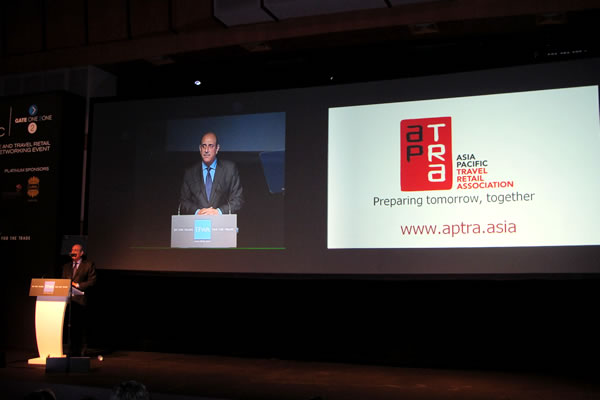 |
APTRA President and Managing Director King Power Group (Duty Free and Travel Retail) Hong Kong Sunil Tuli discussed how APTRA aims to provide exclusive insights into travelling consumers’ behaviour with new consumer research |
Petit Bateau President Christian Blanckaert, formerly Vice President of Hermès International, highlighted the unprecedented growth of the luxury industry and its quick recovery from the 2009 economic crisis. The industry has evolved from one that comprised small, family-owned businesses based on exclusivity and heritage to a huge market dominated by powerhouses such as LVMH and The Gucci Group.
Blanckaert noted how luxury watches and perfumes were highly sensitive to the downturn; similarly, demand was quick to bounce back in these categories as the economy improved in 2010 and 2011. The leather and jewellery categories remained relatively stable even in the face of crisis, he added. In terms of regional performance, Asia Pacific – Japan, China and India – emerged as the number one market during the economic downturn. Blanckaert pointed to Japan as the “country of reference” for the region, with China following closely behind with its increasingly affluent younger consumer market. India, despite its vast potential, is not yet ready to welcome the luxury industry though is likely to do so in the medium term, he added.
In his closing, Blanckaert noted that the duty free sector will grow in parallel with the luxury industry but it must change its approach as the market changes: There is a growing divide in the luxury consumer segment between the “logo addicts” and those who prefer a more discrete level of luxury, he said. Airports must therefore cater to this increasing fragmentation with different luxury offerings, from the more mass market and affordable luxury brands to the ultra premium, high-end ones. “The luxury business is driven by offer and not demand,” he concluded.
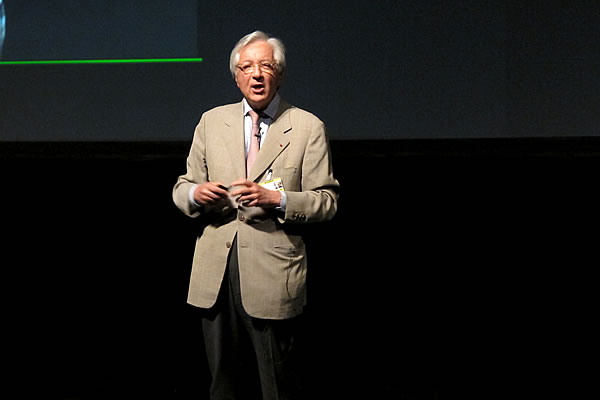 |
Petit Bateau President Christian Blanckaert offered insights into the success of luxury brands in Asia Pacific | 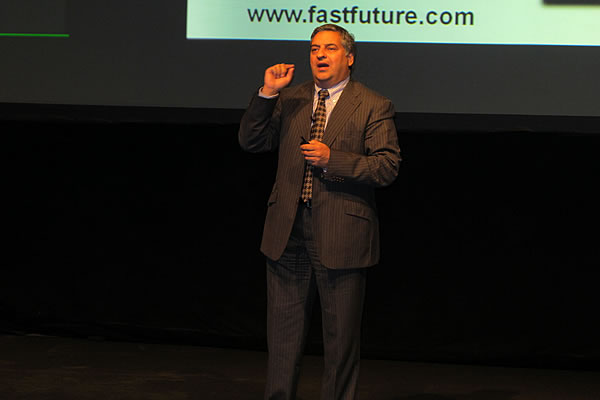 |
Fast Future CEO Rohit Talwar highlighted some of the global trends shaping the Asia Pacific landscape |
Fast Future CEO Rohit Talwar highlighted some of the global trends shaping the Asia Pacific landscape, including the rise of the middle class following the economic crisis and the increasing sophistication of consumers, who are making better informed pre-purchase decisions. He also brought attention to opportunities arising from new retail formats – e.g. auction sites, outlet and pop-up stores – new technology such as next-generation smart phones, holographic laptops, and apps; as well as the integration of virtual and physical for innovation. Experimentation and innovation are key, and technology is a key enabler to this aim.
In a workshop titled Japan Inside Out, moderated by The Moodie Report Executive Director Dermot Davitt, Duty Free Shops Association of Japan Chairman Akito Abukawa focused on the positive sentiments worldwide with regard to Japan’s resilience following the recent earthquake and tsunami crisis. It has been aided by “˜neo-Japonism’ and its “˜cool’ image, resulting from a global appreciation of the Japanese culture and lifestyle. Local goods have been popular with tourists, as well as its variety of “˜quality experiential destinations’. The concept of omotenashi – hospitality from the heart – is key to its service culture and an element in Japan’s aim to hit 30 million visitors.
Narita International Airport Corporation Senior Executive Vice President & Representative Director Harubumi Kobori highlighted the vast potential of the metropolitan area in Tokyo, Japan’s most affluent city. Kobori said that the scale of capacity and the air service network are key factors in the evaluation of an airport’s quality/rating. To this end, Narita is undergoing expansion to facilitate 300,000 annual movements by 2014; its plans include expanded passenger terminals, dedicated business aviation facilities and will also cater to the rise in demand of low cost carriers (LCCs). It aims to increase its service routes for both Narita and Haneda, increasing connectivity both within and outside Japan.
JTI Vice President Consumer and Trade Marketing Worldwide Duty Free Ming Lee Foo outlined the characteristics of the “˜New Japanese Consumer’, who is more independent and less reliant on “˜badges’ for validation. The mature consumer is now focused on exclusive products, discrete brands and fast fashion – with a knack for mixing high and low end brands – and more concerned with the lifestyle aspect of retail, he said. He highlighted Japanese women in their 30s and 40s as a key force in the market, as well as a shift towards destination-unique local goods. Retailers must there adapt to changing consumer behaviour, he noted.
Japan Tourism Marketing (JTM) President Masato Takamatsu revealed some insights on Japanese consumers following the economic crisis. The results of a TFWA/JTM 2009-2010 survey showed that shopping overseas is integral to the travel experience for Japanese women as compared to men – making them a key target market for retailers. The earthquake and tsunami crisis has also led to some changes in Japanese lifestyle values, making them more ecology-oriented and inducing in them a greater need for relaxation and “˜refreshment’, and this includes overseas travel.
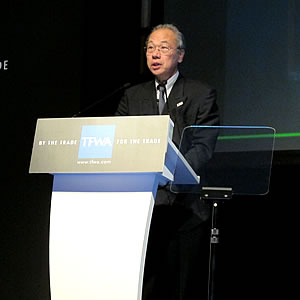 | 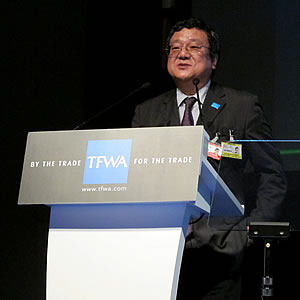 |
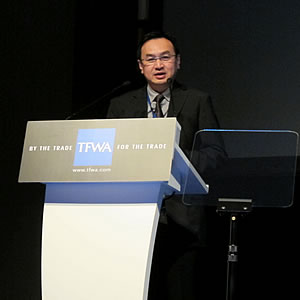 | 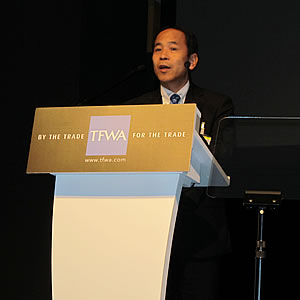 |
(Clockwise from top left) Duty Free Shops Association of Japan Chairman Akito Abukawa, Narita International Airport Corporation Senior Executive Vice President & Representative Director Harubumi Kobori, Japan Tourism Marketing President Masato Takamatsu, and JTI Vice President Consumer and Trade Marketing Worldwide Duty Free Ming Lee Foo | |
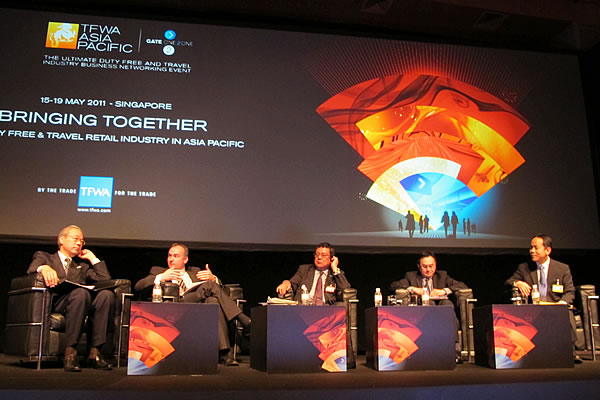 |
At a well-attended TFWA industry association working lunch, APTRA President Sunil Tuli outlined the key challenges facing the regional industry, and called on the trade for further support and membership. He underlined the new research being undertaken by APTRA and consultant M1NDSET into consumer behaviour, noting that this would form the basis of a body of work on which members could rely.
WDF Business Relations & External Affairs Director Sarah Branquinho highlighted some of the issues that have arisen for the industry in Europe, and that are likely to face the Asia Pacific trade in the years ahead.
Chief among these is the “˜one-bag rule’ whereby low-cost carriers such as Ryanair are “changing the game” for the airports business by restricting carry-on baggage.
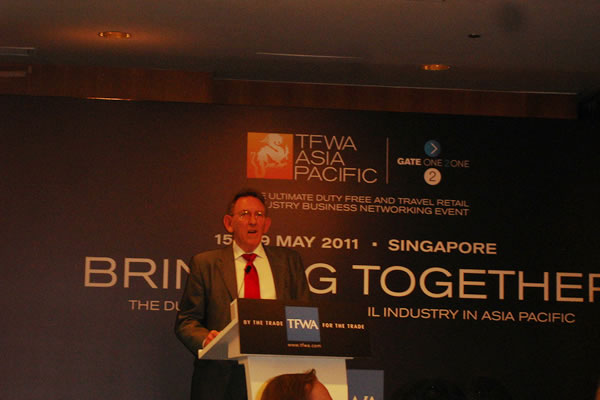 |
ETRC Secretary-General Keith Spinks urged the industry’s attention once more on the tobacco issue |
ETRC Secretary-General Keith Spinks also spoke, and urged the industry’s attention once more on the tobacco issue, with the WHO’s Illicit Trade protocol looking to put duty free sales back on the agenda at its next meeting on 4-8 July. The WHO will continue to look for a ban on duty free tobacco, and focus too on restricting inbound allowances.
M1INDSET Founder Peter Mohn revealed some key findings from the company’s passenger research on APTRA’s behalf, with companies urged to join the association to benefit from the information.
Later, as reported China was the focus of another key session, with China Duty Free Group (CDFG) unveiling plans for what it said will be the world’s largest duty free complex at Haitang Bay in Sanya on the resort island of Hainan.
Haitang Bay Duty Free Complex will offer 350,000sq m of total space, including 150,000sq m dedicated to commercial services. The duty free store, to be built in two phases, will cover 100,000sq m. Phase one will open in two to three years.
In a separate workshop called Partnerships in Practice, moderated by The Travel Retail Business Editor Doug Newhouse, the three-speaker panel explored how airports, retailers and suppliers can enhance their partnerships.
Puig Travel Retail General Manager Patrick Bouchard called for the sharing of information and knowledge between all partners to better target the consumer. Using examples of various high profile promotions, Bouchard underlined how the involvement of all three parties in the Trinity can drive penetration in the airport. The high costs involved in such initiatives brought up the question of sustainability, to which Bouchard put forward the “˜Counterpart Model’ – an approach that spells out how all three partners can share investment costs and reap the rewards of enhanced penetration.
Stressing partnership as “the best route to growth”, Lagardere Services Asia Pacific COO Emmanuel de Place said that true partnership can take many forms: retail development, shopper communication, brand initiatives, and innovation in the offer.
Providing an airport’s perspective on the debate, Sharad Sachdeva, Head of Retail & Duty Free at GMR/Delhi International Airport outlined the opportunity for growth in the Indian travel retail market, and the various challenges in entering this diverse sector. Strategic partnerships with local companies that understand the intricacies of the landscape are key to success in Indian travel retail, he stressed. An airport partner, he added, is able to provide the level of support that new companies need – not just within India, but also globally.
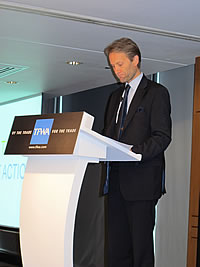 | 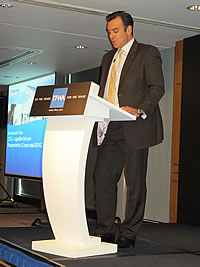 | 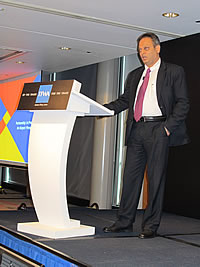 |
| Workshop D – Partnerships in Practice: (L-R) Puig Travel Retail General Manager Patrick Bouchard, Lagardere Services Asia Pacific COO Emmanuel de Place, and Sharad Sachdeva | ||
Opening Cocktail
On Sunday night, many of the delegates to TFWA Asia Pacific attended a fine Opening Cocktail, which was held at Raffles Hotel in Singapore.
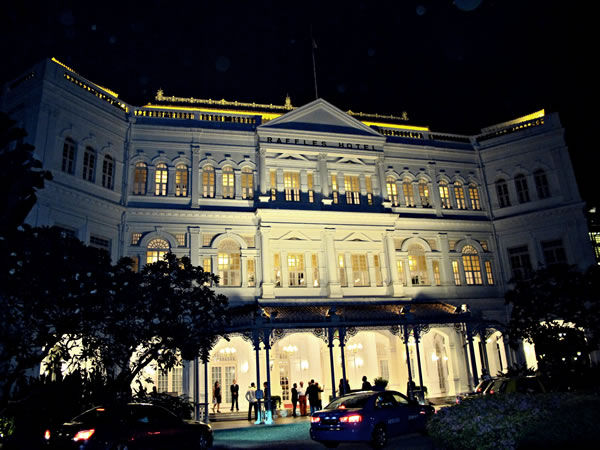 |
The Opening Cocktail for TFWA Asia Pacific 2011 took place at Raffles Hotel |
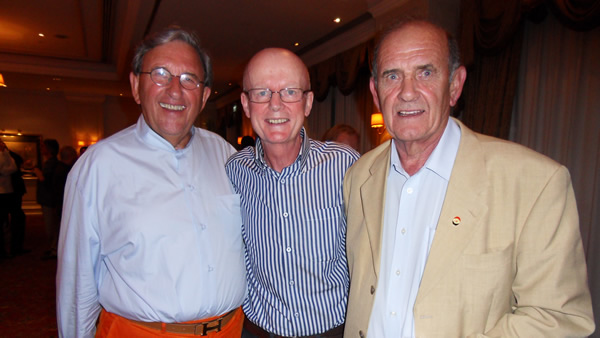 |
The Moodie Report Founder and Chairman Martin Moodie (centre) with Gebr Heinemann’s Harry Diehl and Dubai Duty Free’s Colm McLoughlin at the Opening Cocktail at Raffles on Sunday night |




